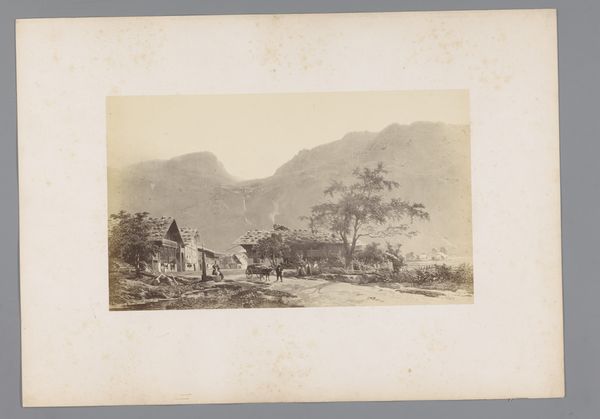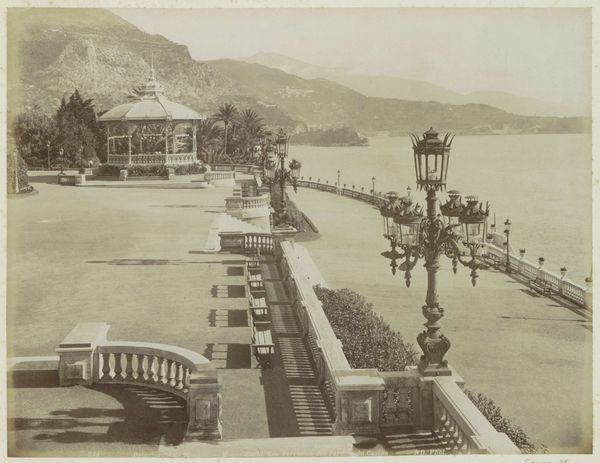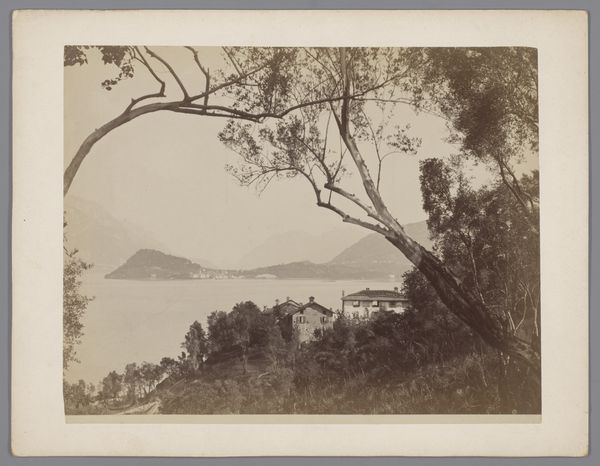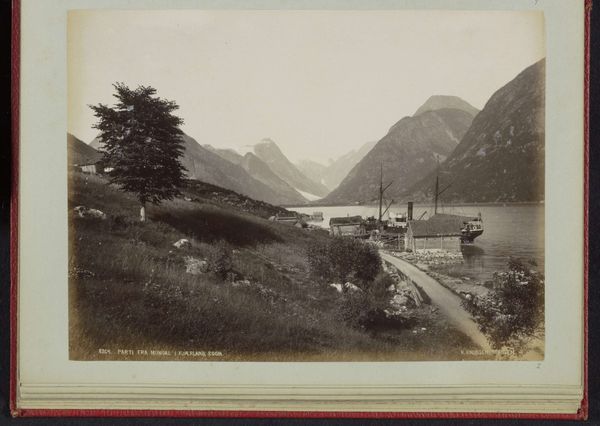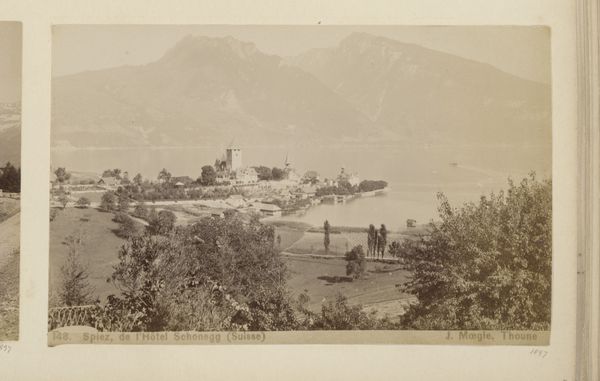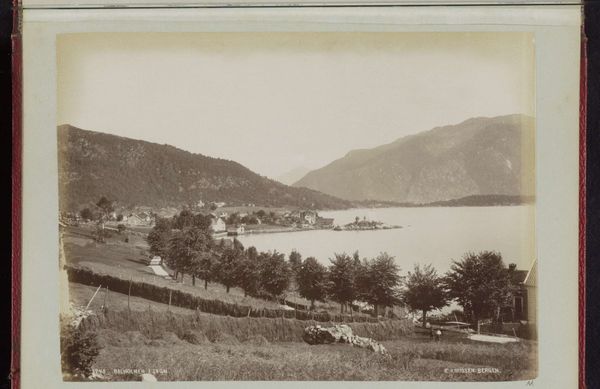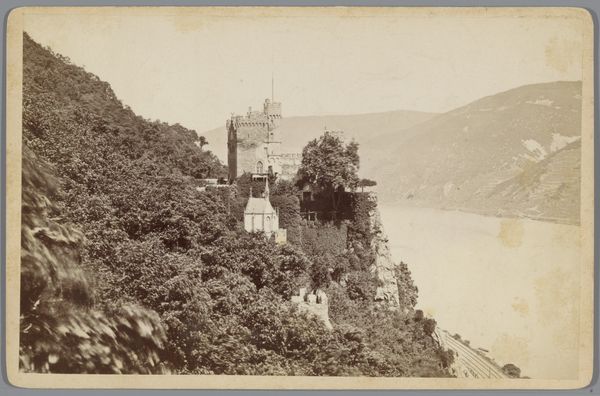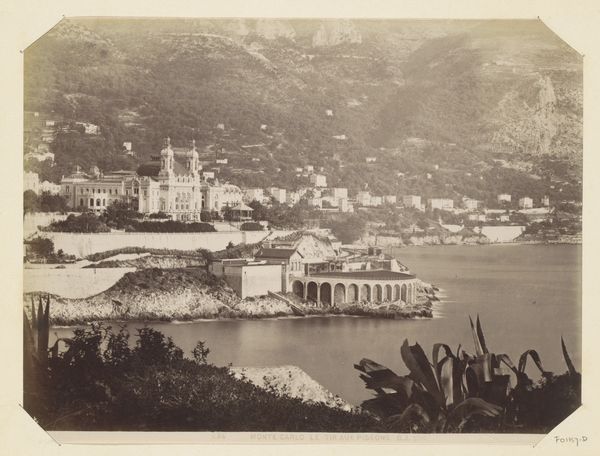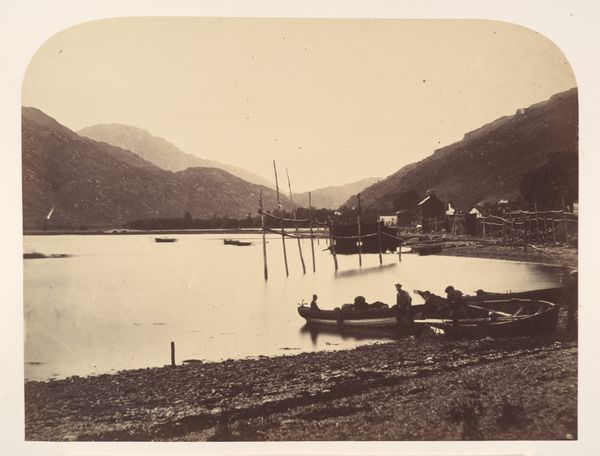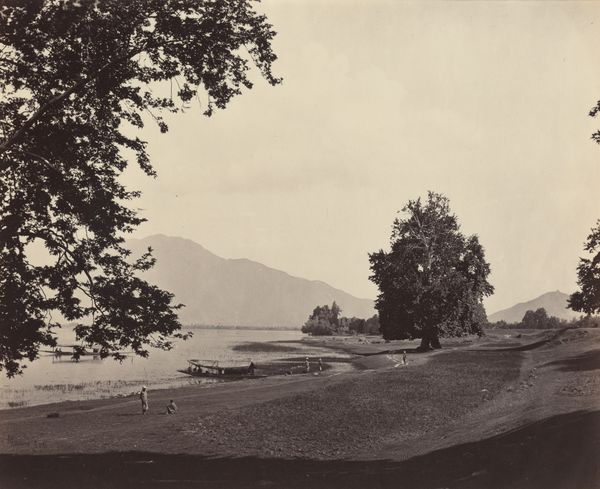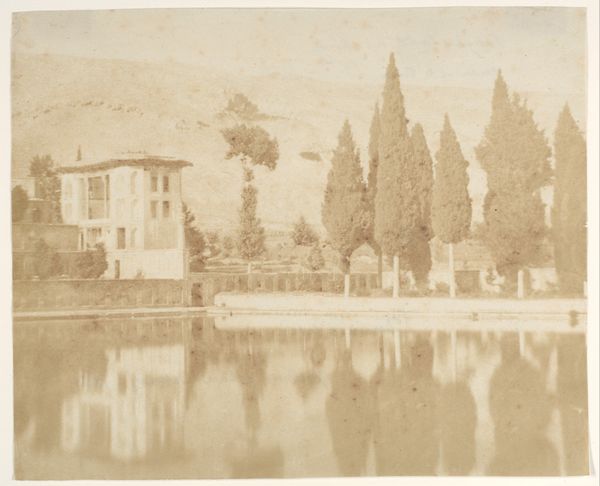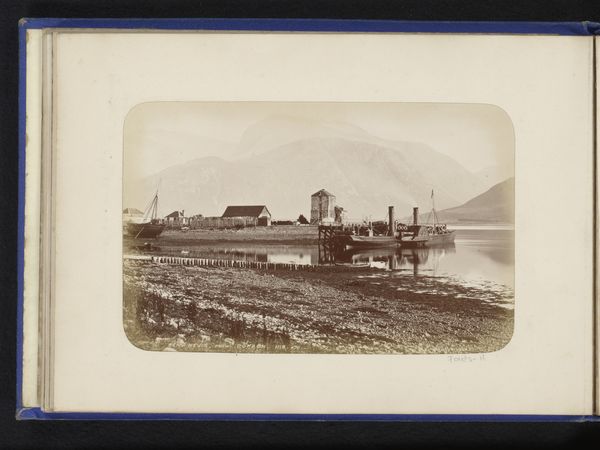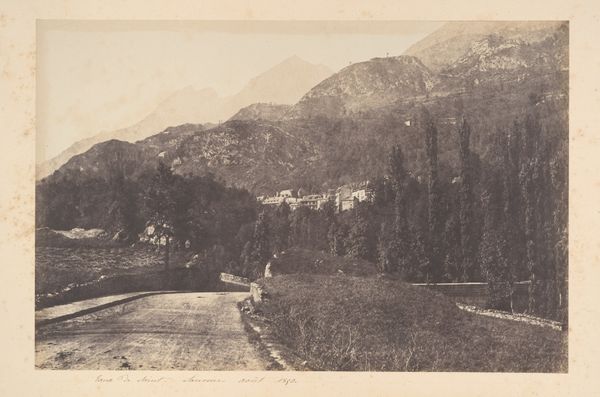
Dimensions: height 95 mm, width 131 mm
Copyright: Rijks Museum: Open Domain
This photograph by Antonio Nessi captures the William Tell statue in Lugano. Photography in the 19th century involved a complex alchemy of light, chemistry, and skillful manipulation. Each print was a unique artifact. Nessi would have meticulously coated a glass plate with light-sensitive emulsion, exposed it in the camera, and then developed the image using a series of chemical baths. The resulting negative would then be used to create prints on paper, like the one you see here. Consider the labor that went into producing this image, from the mining of the silver used in the emulsion to the skilled work of the photographer in the darkroom. Photography democratized image-making, allowing for the mass production of portraits and landscapes. The photograph transformed our relationship to documentation and memory. By considering the materials, processes, and social context of this photograph, we can gain a deeper appreciation for its significance as both an artwork and a historical document.
Comments
No comments
Be the first to comment and join the conversation on the ultimate creative platform.
